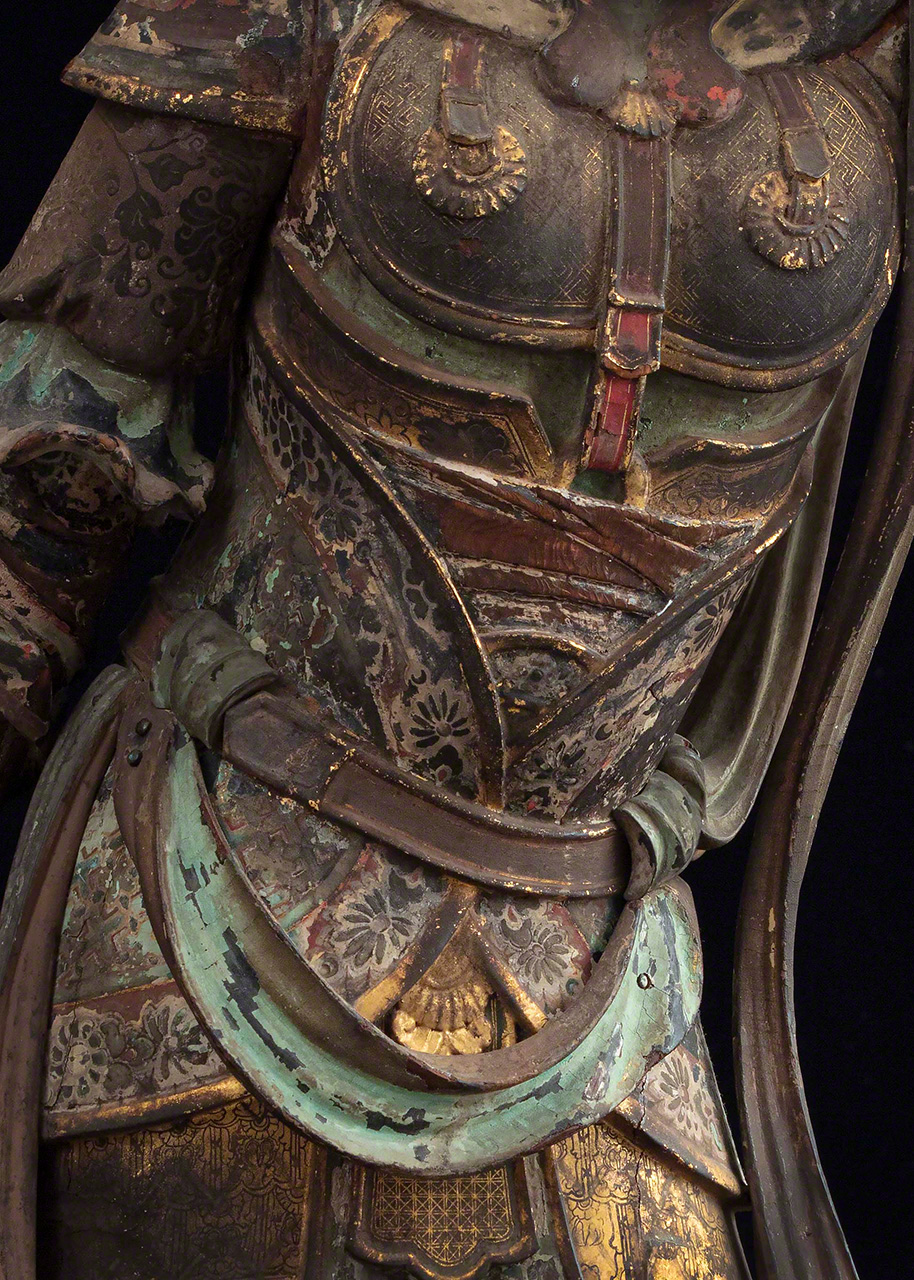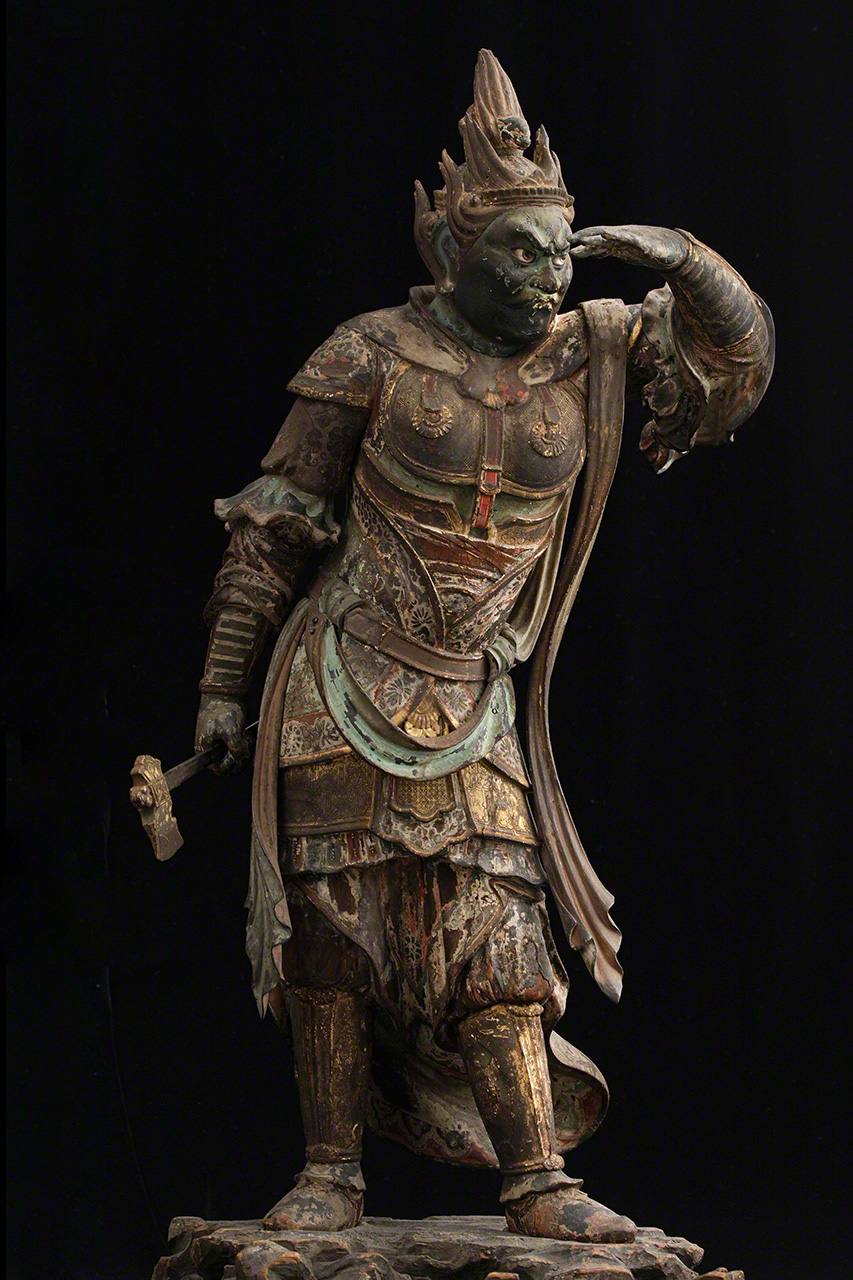
Standing Statue of the Dog General, One of the Twelve Heavenly Generals
Culture Art Images Guide to Japan- English
- 日本語
- 简体字
- 繁體字
- Français
- Español
- العربية
- Русский
This sculpture is one of the 12 heavenly generals, a guard of honor that protects Yakushi Nyorai (Bhaisajyaguru), the “Medicine Buddha” who cures all suffering. The ever-alert eyes glint with a passionate devotion to the Buddha and a determination to protect the dharma from its enemies. What is this figure staring at so intently?
Despite the stern expression on his face, there is something endearing about this figure and his solemn pose, his hand held to his eyes as he scans the horizon for approaching enemies. This is Shōtora Taishō, or Jutsushin (the “Dog General”), one of the 12 heavenly generals who once stood guard alongside Yakushi Nyorai in the main prayer hall at the temple Jōruriji in Kizugawa, Kyoto.
Originally Indian deities who were subsumed into Buddhism, the 12 defenders belong to the category of ten (or deva) in terms of their categorization in Buddhist sculpture. Because of their number, in China the generals became associated with the 12 animals of the East Asian zodiac. This tradition spread to Japan, and from the Heian period (794–1185) it became the norm for sculptures of the guardian deities to carry depictions of the animals on their heads (a dog’s face can be seen atop the flame-like hair of this image).
Documents at Jōruriji suggest that the set of sculptures was made in the early thirteenth century. The heavenly scarf (ten’i) that this figure wears over his left shoulder does not hang straight down but is allowed to shift as it follows the movements and contours of the body, strengthening the impression of dynamism. This hyperrealistic, nonsymmetrical style is typical of the Kei-ha school, the most important group of Buddhist sculptors in the country during the Kamakura Period (1185–1333).

(© Muda Tomohiro)
The 12 figures are dressed in armor and hold different weapons, each one leading a force of 7,000 soldiers. When all the generals were mustered around the image of Yakushi Nyorai, a great army of 84,000 invisible foot soldiers would have stood guard around the Buddha.

(© Muda Tomohiro)
In the chaos that followed the Meiji Restoration, the temple’s 12 generals were scattered and were in the hands of collectors by 1884. Today, five of them are in the Tokyo National Museum, while the remaining seven belong to the Seikadō Bunko Museum. That the full dozen should have survived the Great Kantō Earthquake of 1923 and World War II without a single casualty, and that all 12 can still be seen in museum collections in Japan, is little short of a miracle.
Shōtora Taishō/Jutsushin (Vajrapani), the “Dog General,” One of the 12 Heavenly Generals
- Height: 75.3 cm
- Date: Kamakura Period (1185–1333)
- Tokyo National Museum (visitors wishing to view it should confirm whether it is on display in advance)
- Important Cultural Property
(Banner photo: Shōtora taishō (Vajrapani) from the collection of the Tokyo National Museum. © Muda Tomohiro.)
Related Tags
medicine Buddha Jutsushin Dog General heavenly general Seikado Bunko
